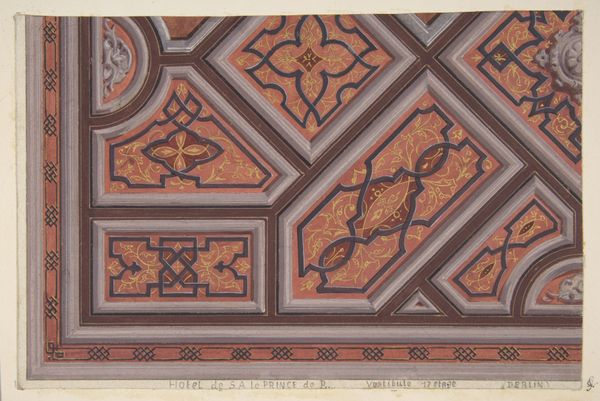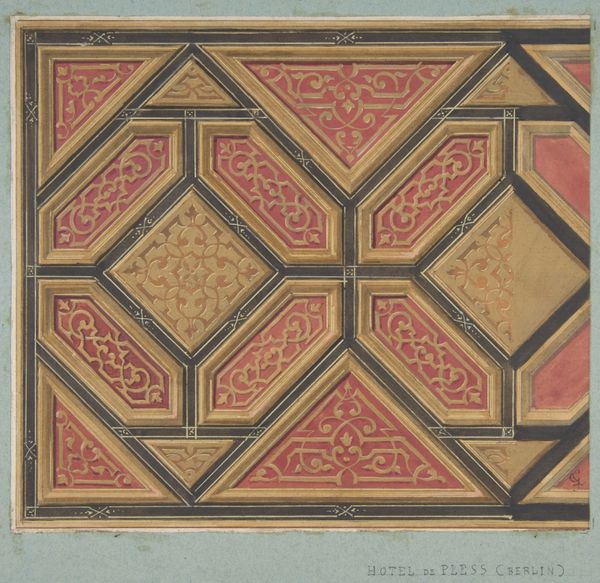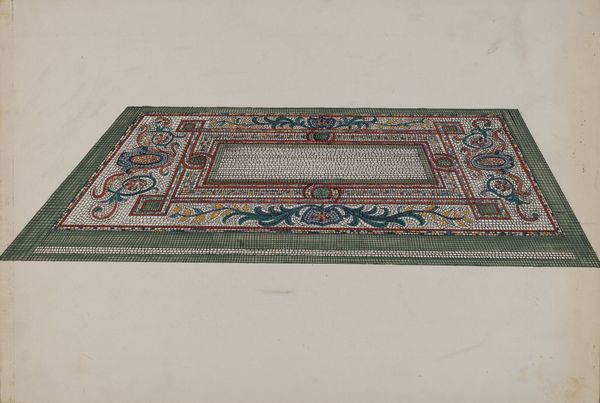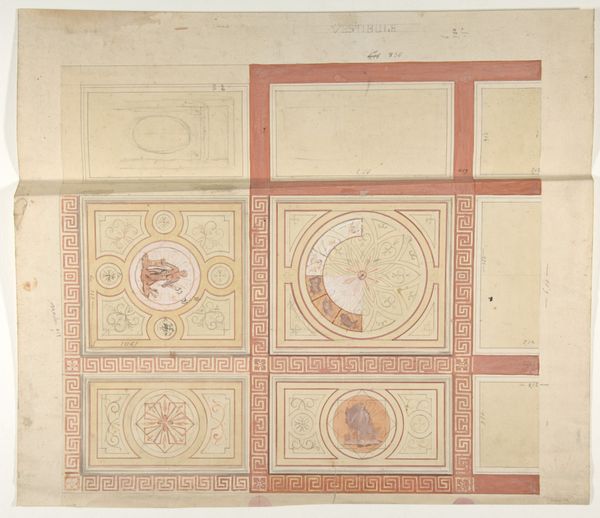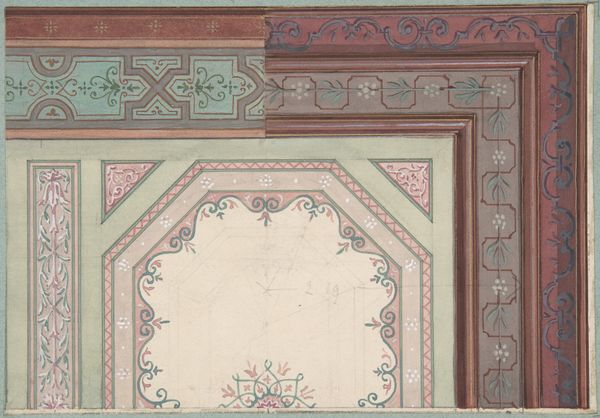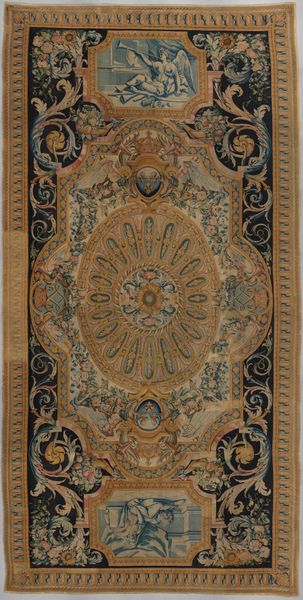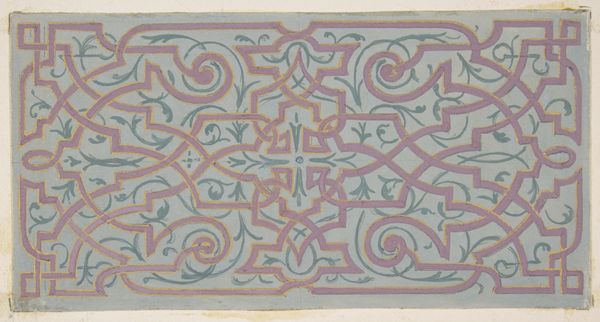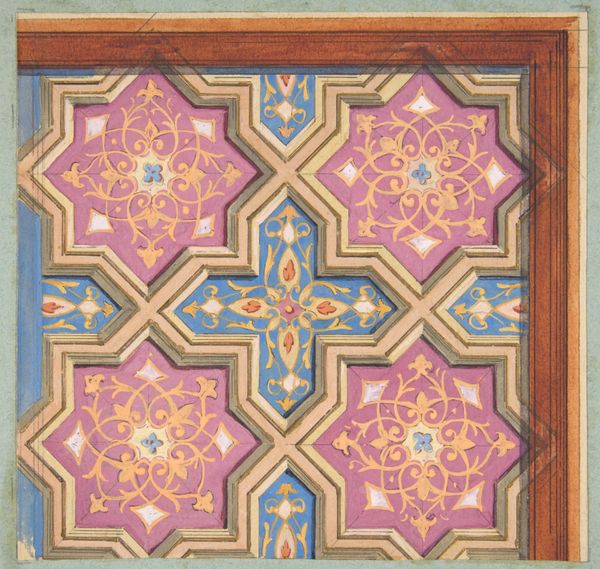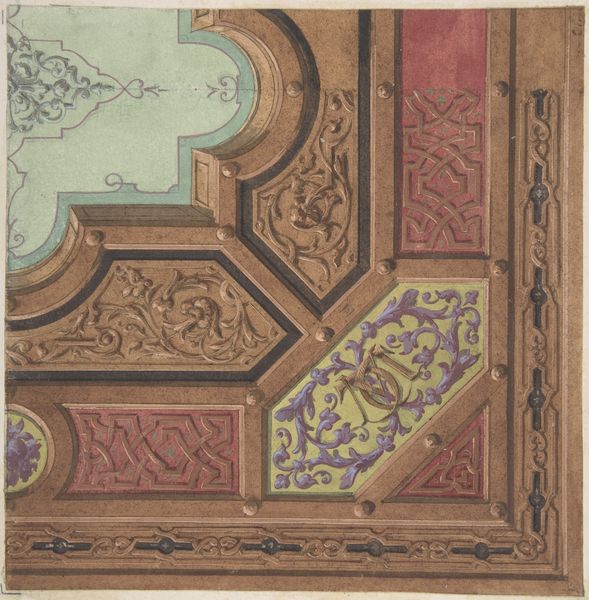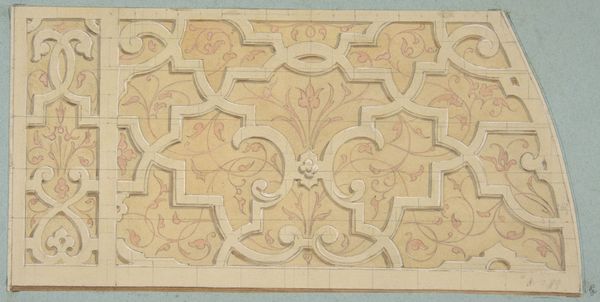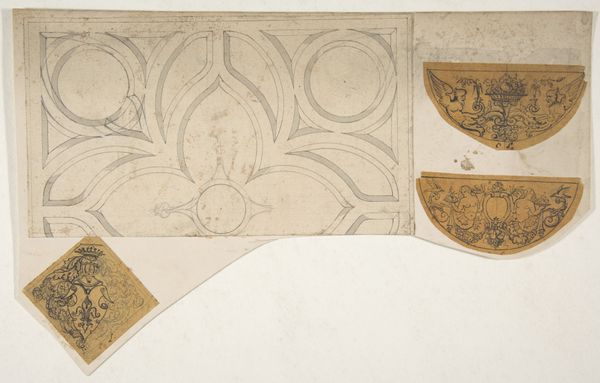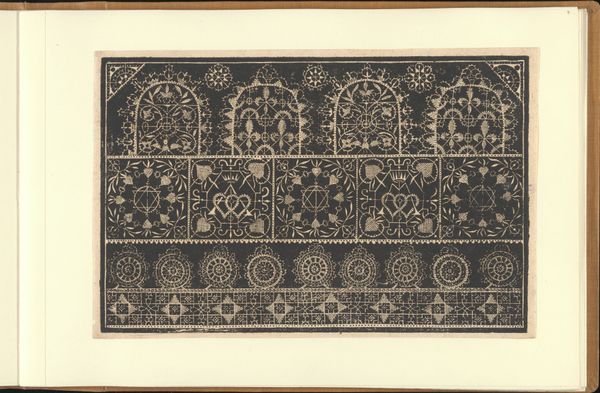
Intarsia Ceiling Design for the Dining Room, Deepdene, Dorking, Surrey 1875 - 1879
0:00
0:00
Dimensions: 10 5/16 x 9 5/16 in. (26.2 x 23.7 cm)
Copyright: Public Domain
Curator: This piece makes me think of old libraries, of secret rooms filled with dusty books and whispered secrets. It’s all browns and creams, a sort of quiet grandeur, don't you think? Editor: You're right, there's a stillness here. What we’re seeing is “Intarsia Ceiling Design for the Dining Room, Deepdene, Dorking, Surrey,” a mixed-media drawing by Jules-Edmond-Charles Lachaise. It was created between 1875 and 1879. It's a preparatory design, located at the Metropolitan Museum. I feel like it reflects anxieties about displaying wealth in that period. Curator: Anxiety, really? I find it rather soothing, all those interlocking shapes, like a visual lullaby. I mean, just look at how the light plays within those swirls, it’s like a gentle dance, an ode to nature in geometry. It seems so precisely measured yet flowing, almost liquid in appearance. Editor: But consider the context. This was the height of the Arts and Crafts movement. The Aesthetic movement was peaking, questioning Victorian excess. Designs like this, however beautiful, can be seen as symbols of class and power at a time when those structures were being questioned. Who has access to dine in rooms designed with such detail? It demands questioning of socio-economic inequality. Curator: I suppose, but I'm more drawn to the intimacy of the design itself. Each tendril seems hand-placed with careful devotion. The watercolor and ink give it a softness, an imperfection that speaks more of human artistry. It breathes. It has this beautiful blend of pattern and free-flowing organic elements. Do you not see this? It whispers, rather than shouts. Editor: Of course, there's a tension there, right? The craft, the handmade quality does resist mass production but these artisans catered to a very exclusive audience. Curator: Hmmm, well maybe this makes us question, who can create art and design versus those that get to commission, live and enjoy it. That shifts my view of the work and its time. Editor: Exactly. I see designs like this as conversations, visual arguments between tradition, the burgeoning fight for accessible public art, beauty, function, and class consciousness, rendered in ink, watercolor and dreams. Curator: Okay, I’m converted, at least a little. Maybe those secret rooms weren't so innocent after all, eh? Food for thought, indeed.
Comments
No comments
Be the first to comment and join the conversation on the ultimate creative platform.
